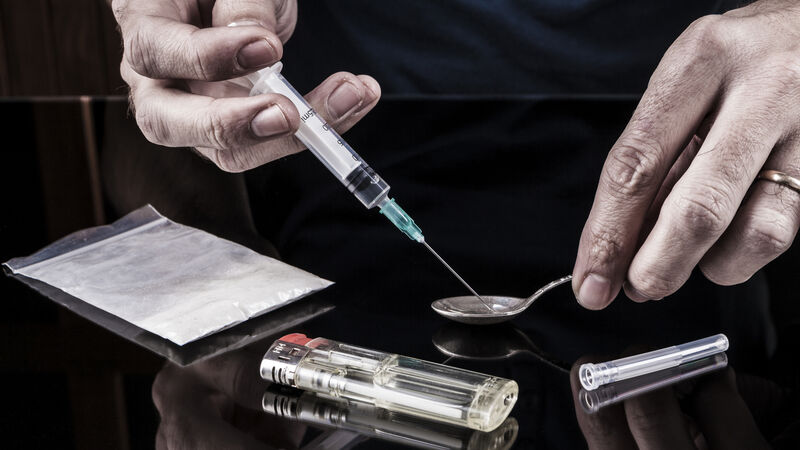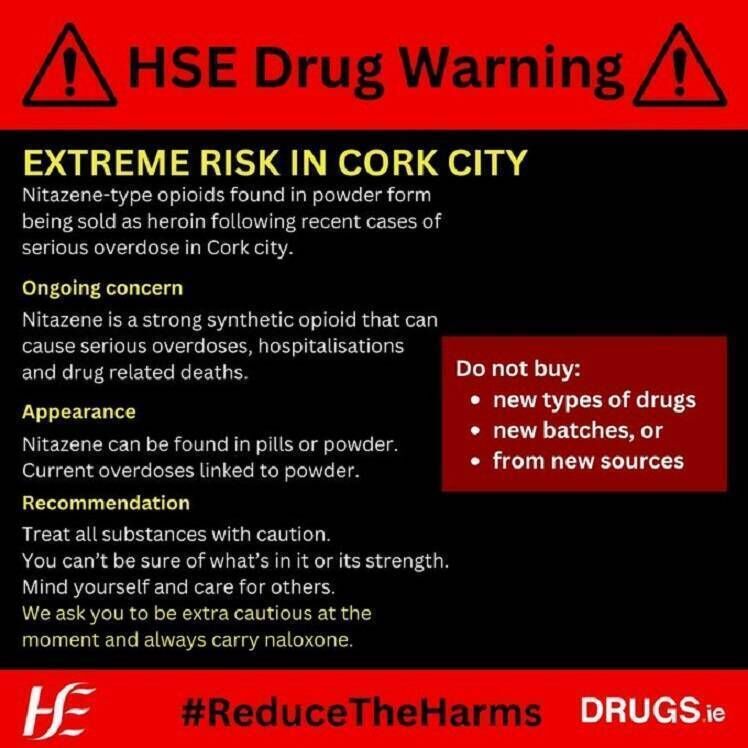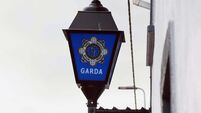Warning of 'extreme risk' to Cork heroin users as eight non-fatal overdoses reported in 36 hours

Following 'recent cases of serious overdose' The HSE issued a warning late on Thursday of nitazene-type opioids being sold as heroin in Cork City. Picture: iStock
The HSE has issued an “extreme risk” warning after a powerful drug has been linked to eight non-fatal overdoses in the Cork region over the last 36 hours.
Forensic Science Ireland (FSI) has confirmed that a trace amount of a Nitazene-type substance - a synthetic opioid sold more than 60 years ago as a morphine alternative but never approved for the medical market - has been identified in a light brown powder associated with Cork city overdoses.
The HSE and FSI are carrying out and analysis to identify the exact composition of this substance, but said that it carries "a substantial risk of overdose, hospitalisation and death.”
Last month, NGOs were alerted to a high number of overdoses around Ireland that prompted further investigations by the HSE.
In a statement via X (formerly Twitter) on Thursday, the HSE described nitazene as a “strong synthetic opioid that can cause serious overdoses, hospitalisation and drug related deaths”.
The drug can “be found in pills or powder” and current overdoses are being linked to powder.

The HSE is recommending that drug users treat “all substances with caution” and is urging people to “always carry naloxone” - a medicine that rapidly reverses an opioid overdose.
HSE national clinical lead on addiction services Eamon Keenan said the issue was first raised on Thursday November 9.
He told RTÉ’s Claire Byrne programme recently that the HSE was alerted to a number of overdoses that were “unusual”.
Reports described how victims had taken drugs and “collapsed very quickly” that it had taken more of the regular dose of naloxone to revive people from an overdose.
He said over the next couple of hours that same day, the Dublin ambulance service also reported they were getting an “unprecedented” number of calls about overdoses.
There were up to 24 overdose call out that day, when the average is five or six, he said:
“The overdoses were happening among people who were using heroin".
Professor Keenan said they collaborated with the gardaí and ambulance service and they got samples of the substance as well as those affected.
The next day they said the synthetic opioid was found in the substance.
“That was the first time we had seen it” he said. “That prompted us to put out a red alert”.
He added that the warnings were put out among NGO’s and Dublin City Council put up notices on their road traffic signs.
The NGOs went around the cities speaking to people and spread the word of it.
“People were being sold this and being told it was heroin, but it was strong heroin and they said don’t inject it smoke it,” he said, adding that “smoking is a risk and can also cause overdose”.












